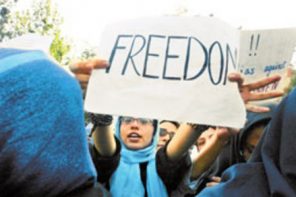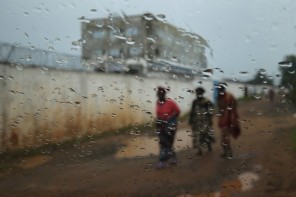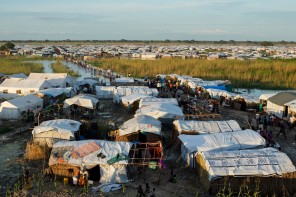Like a lot of bloggers, weird Google search terms will send people my way. I used the word “thighs” in a blog headline once, and now every week I get a few people who I’m pretty sure are just looking for porn. Awesome.
But here’s a Google search term that’s also a reminder of how important the conversations about rape and confidentiality are. Yesterday, some came to my blog by searching, “how to find out identity of a rape victim.”
On a related note, I’m reading an interesting report by aids-free world on sexual violence during Zimbabwe’s election crisis. It’s worth your perusal, but I wanted to ask what you think about the “anonymizing” tactic in their photos.
There are photos of women who have experience sexual violence. I presume they are from Zimbabwe, though I don’t recall the disclaimer (which narrates what I’m now explaining) saying so. In any case, these women are not the women whose stories are quoted in the report. And these women have been “disguised” by having colorful lines drawn over their face in significant places — over the eyes and the nose, say. The lines are also clearly a design element. Here’s an example:

This is the best one; others in the report strike me as…a little too easy to unmask? You’d have to know the person…but of course that’s entirely the point.
Also, what about the aesthetic here? It makes me uncomfortable; it feels a bit like the crime has literally sliced away the identity of the victim. I’m not sure that’s the gestalt to go for. Thoughts?
Meanwhile, if the pictures are not of the same women telling stories in the report…is it important that we know they’re sexual violence survivors? Is it weird that they are illustrations, public stunt doubles for the stories we know — but they also have their own stories, that we don’t? If so, would including pictures of women who hadn’t been raped be any better? Is the solution not to address the issue at all, except to say in a disclaimer, “The women photographed are not the women whose stories are narrated in this report”?
nk
I’d love to hear thoughts on this, especially from those who found the Kristof stuff important. It seems to me that it’s worth thinking about. The decision to obscure or anonymize is not the only one, obviously. There’s an aesthetic, with implications, to this stuff too… But now I’m rambling. Curious to hear what you think.




I don’t like the pink lines drawn on the woman’s face — on the one example you show — although I haven’t seen any of the others! The lines do seem, um, sort of violent, like you said — identity SLICED off. Or like a photo that has been scribbled on. I don’t like it aesthetically.
A large NGO that a friend of mine worked for has a pamphlet on GBV in NK showing the photo of an older woman facing the camera full on. I am pretty sure this is a random photo taken by a random staff member at a random time. Nothing in the pamphlet says that this woman is a rape victim and obviously GBV doesn’t mean rape. Nothing in the pamphlet said that she is a CBO leader or activist either. I’d be shocked if she gave the okay to be the face of the GBV programme. I don’t understand the thought process that led to her photo being cropped and dragged and printed onto this pamphlet but I think it must have something to do with her looking “exotic looking” or “older and helpless”.
Thanks for your comment, Rachel. Sorry for the delay in responding. Anyway, yeah, all the other pics in this report look like that, or at least the method of anonymizing is the same. Glad I’m not the only one to find it odd.
That story is fascinating. The pressure to “have art” with printed words can turn things a little upside down. Hey, at least they got it right enough to use a woman from NK? Yeah, um, that’s not really enough…
Hi Jina,
I’m currently researching media representations of rape survivors, and coming across this post just now, my immediate reaction was, ‘oh man, i hope she doesn’t get more creepy google search results from my research!’
Anyway, I really appreciate your blog and the questions and issues that you raise, and just wanted to quickly say hello!
Thanks, Valerie! Trust me, the creepy ones are clearly not here for research… Would love to hear more about your work. Drop a line to share your results!